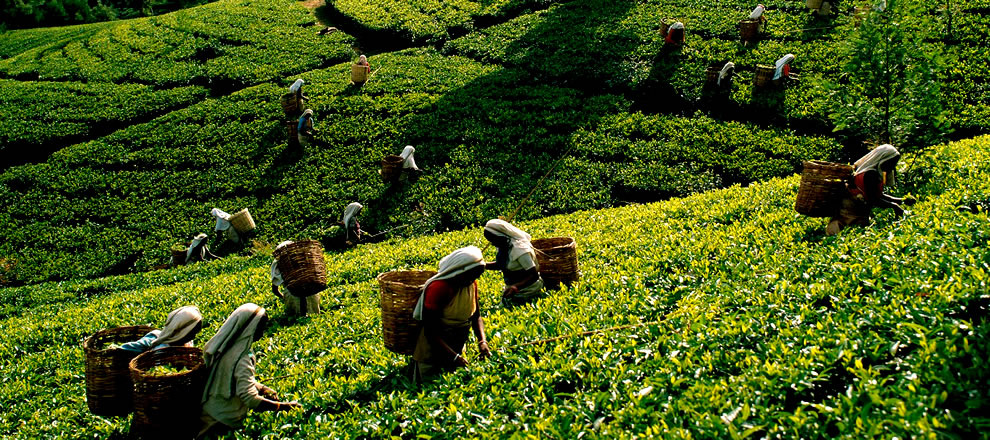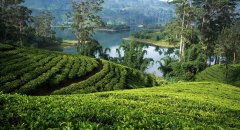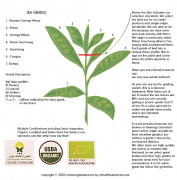Seven tea-producing regions of Sri Lankan black tea introduce where Lipton Ceylon black tea and milk tea are specially produced.
The tea area of Ceylon did you know that 4% of the land in Sri Lanka is a tea garden? Anyone who really loves Ceylon tea knows that every tea producing area in Sri Lanka produces tea with its own characteristics. Tea is grown in seven regions of Sri Lanka. They are different from each other because they are all at different elevations of 3000 to 8000 feet. Due to different climatic conditions and altitude, Ceylon tea has different tastes and flavors. The panoramic tea garden in Sri Lanka offers countless mixed and single-garden teas, which are precious and magnificent. Want to try Ceylon tea for the first time? Let's show you around Ceylon's most popular tea-growing areas and their famous tea. 1. Kandi kanti tea will always be special because Sri Lanka's first Ceylon tea garden is in Kandi district. This area is located in the central province of Sri Lanka and can only be reached through steep mountain passes. This makes the cultural traditions of the region maintain the authenticity and characteristics of several centuries. There are many famous tea-growing areas in Kanti. One of them is the town of Pussallawa, which was once the ancient capital of the royal family of Sri Lanka. Located between 2000 and 4000 feet above sea level, Pushalawa is famous for its medium-grown tea. Ceylon black tea from the Pushalawa region has a woody, malt and deep gold color. Tea from the Kandi region usually produces a bright copper hue, rich and rich. If you like bold tea, you can explore the complete range of Condi tea here. two。 Uwawa tea grows at an altitude of 3000 to 5000 feet and is world-famous for its unique flavor. The climatic conditions here make the tea aroma overflowing, mellow and smooth taste. If you like green tea, then this tea growing area has exactly what you need. Nanu Oya district in Uva province is famous for its high growth Ceylon green tea in Nanu Oya district.

3. The Timbra region of Timbraselan is famous for its high-growing tea leaves. Due to the difference in altitude, some teas in this area are mellow, while others are subtle, but most of them have a mellow taste. This change in taste makes the area interesting. The Timbura region is famous for its organic farming practices. This area has plenty of rain and is always foggy. Only botanical organic fertilizers and grass-fed cattle manure can grow delicious tea in Dimbulla's tea garden. 4. The Nuwara Elia region of Ceylon has the highest elevation and rugged mountains. Tea from this area has a delicate smell and a rich golden hue. At 6100 feet above sea level, Nuvalaelia is famous for producing Ceylon high-growing tea, which is well-brewed and is famous for being "suitable for God". This kind of tea, which grows above 4000 feet, is considered to be of high quality. They exude a beautiful golden color and produce a strong, strong aroma. The tea in this area has a light, delicate, sour taste, which we can only attribute to the time and care of picking and processing this kind of tea. The unique climate and altitude of Nuvalaelia provide you with a unique flavor experience. 5. The "dwarf" tea produced in Luhana region, such as Huana Tea area, has a mellow and unique taste. Low-grown tea is less than 2000 feet above sea level. They have good color and strength. These drinks are usually drunk with milk. Forests such as Huna are home to elephants, leopards, bears, wild boars, deer, giant flamingos and, of course, the best tea. Ruhana tea grows in an area nourished by high humidity and monsoon season, surrounded by a variety of wild animals. Would you like a cup of Ceylon tea that reminds you of the monsoon? Ceylon tea is even more special because it is also the cleanest tea with pesticide residues in the world. This has been confirmed by the ISO Technical Committee. Sri Lanka is also the first country to receive the "ozone-friendly tea" label recognized by the Montreal Protocol and is proud to have the first world national tea brand recognized by the United Nations Global Compact.
Important Notice :
前街咖啡 FrontStreet Coffee has moved to new addredd:
FrontStreet Coffee Address: 315,Donghua East Road,GuangZhou
Tel:020 38364473
- Prev

Ceylon Sri Lanka tea what kind? How to get imported Ceylon Highland Black Tea?
For tea lovers, the journey of tea from plantation to doorstep is as special as tea leaves. Ceylon tea is a tea whose origins and history give it special importance in the hearts of tea lovers. It has a unique legacy and success story behind it! If this is your first contact with Ceylon tea, let
- Next

Where can I buy authentic Sri Lankan Ceylon black tea? How to cook Ceylon black tea without astringency
What kind of Ceylon tea is best with iced tea? Now that you know how easy it is to brew cold, you may be tempted to prepare iced tea at home. Looking for the best Ceylon tea to make iced tea? Almost all kinds of tea, black tea, green tea, white tea and brewing tea can be used to make iced tea. However, we highly recommend some stronger flavors.
Related
- Stop business for rectification! Jasmine milk white clerk deliberately did not pack and let the rider wait!
- Ridiculous! Tims pressured the federal government to relax the entry of foreign workers?!
- How to judge the brewing method by the state of the powder bed? How to break out of a deep hole with hand-brewed coffee?
- Detailed explanation of the proportion of gold gouache in hand-brewed coffee? What are the Gold Cup Guidelines?
- What is the difference between the gold label rose summer and the red label rose summer in Guixia Village? Are Rose Summer 1931 and Gori Rose Summer?
- Cudi stores ban other brands of coffee?! Netizen: No problem
- Is it better to make coffee cold or hot? Why is it recommended to drink hot coffee?
- Lucky people collapsed! The store ceiling is full of AI surveillance cameras?!
- Law Enforcement Bureau? Mixue Ice City enters Zhengzhou BRT platform!
- Heavy! Nestlé has been exposed to consider selling blue bottle coffee!

